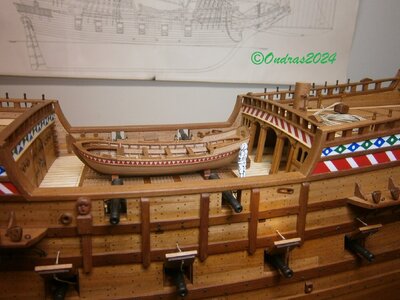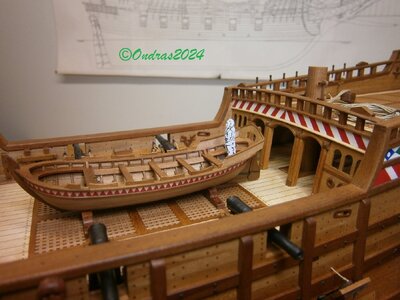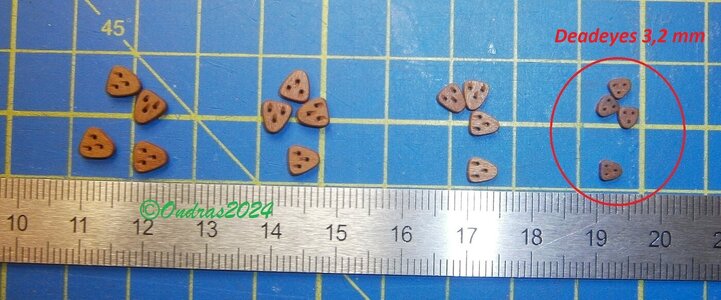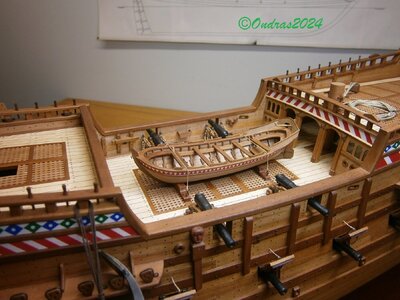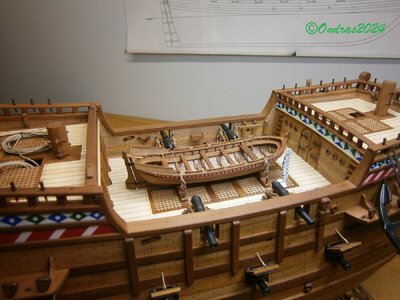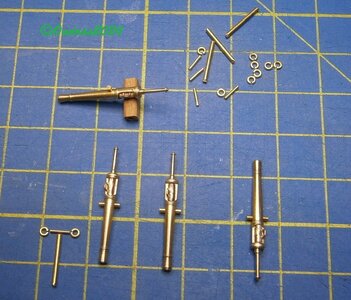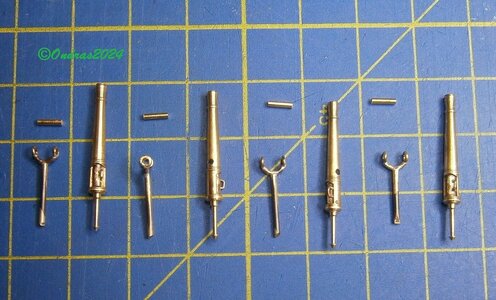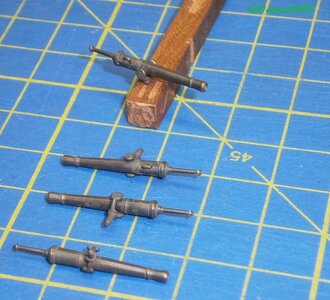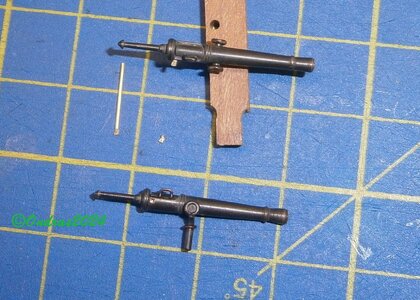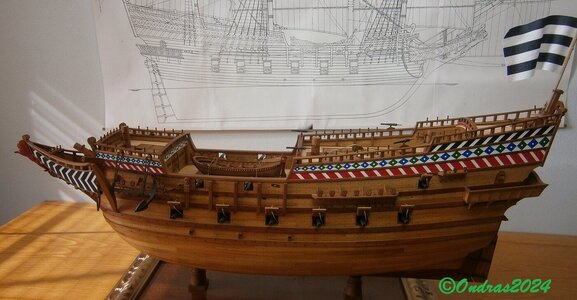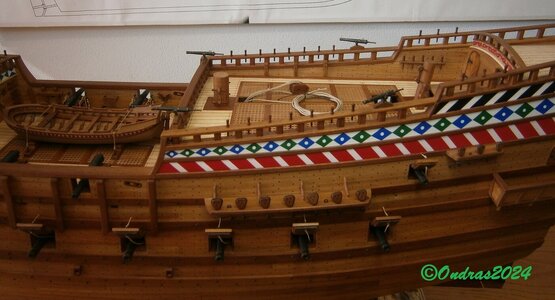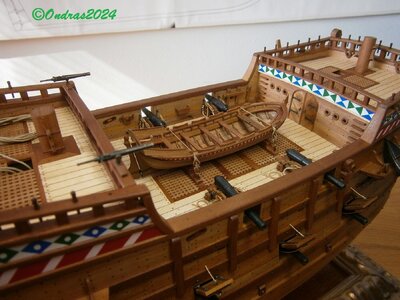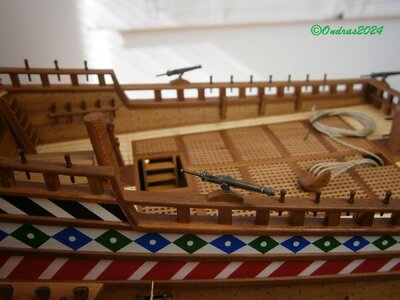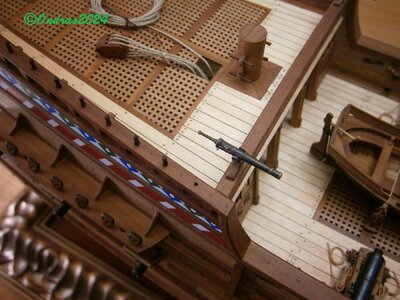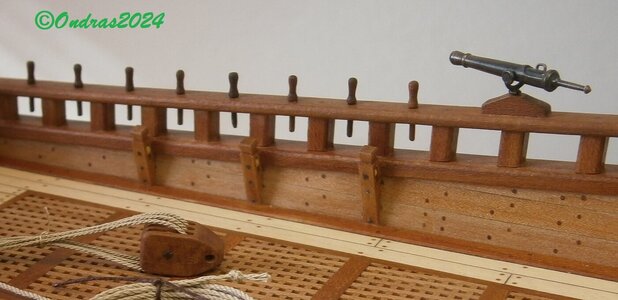your rudder on the little boat is amazing - with hinches  - very good details
- very good details
-

Win a Free Custom Engraved Brass Coin!!!
As a way to introduce our brass coins to the community, we will raffle off a free coin during the month of August. Follow link ABOVE for instructions for entering.
-

PRE-ORDER SHIPS IN SCALE TODAY!
The beloved Ships in Scale Magazine is back and charting a new course for 2026!
Discover new skills, new techniques, and new inspirations in every issue.
NOTE THAT OUR FIRST ISSUE WILL BE JAN/FEB 2026
You are using an out of date browser. It may not display this or other websites correctly.
You should upgrade or use an alternative browser.
You should upgrade or use an alternative browser.
Roter Löwe 1597 by Ondras71 - scala 1/60
- Thread starter Ondras71
- Start date
- Watchers 85
-
- Tags
- galleon roter löwe
I am just curious - I am not sure, if the seamen used deadeyes to fix a boat on the deck - is it not "too much" for "only a boat".
But maybe - I am not a professional sailor......
Definitely it is looking very good
But maybe - I am not a professional sailor......
Definitely it is looking very good
- Joined
- Aug 8, 2019
- Messages
- 5,538
- Points
- 738

I agree with Uwe, I think it was in James Harland I read about this. He was talking about the boat that was lashed to the deck, the meaning of that is that there was use of a loop lashing to secure the boat. No blocks needed. Only rope and rings on deck. An example for such a lash you can find in the book of knots from Ashley. Like knot number 1514. But like Uwe also mentioned, we are no sailers and we can be wrong.
I am just curious - I am not sure, if the seamen used deadeyes to fix a boat on the deck - is it not "too much" for "only a boat".
But maybe - I am not a professional sailor......
Definitely it is looking very good
Hello guys. I have been looking for a boat mooring from that era for a long time. I didn't want to use a more modern solution. I found this binding in the book Prins Willem by Herman Ketting.I agree with Uwe, I think it was in James Harland I read about this. He was talking about the boat that was lashed to the deck, the meaning of that is that there was use of a loop lashing to secure the boat. No blocks needed. Only rope and rings on deck. An example for such a lash you can find in the book of knots from Ashley. Like knot number 1514. But like Uwe also mentioned, we are no sailers and we can be wrong.
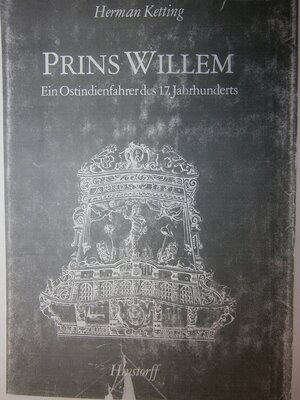
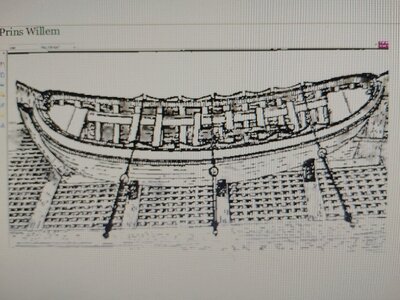
I'll admit it, it doesn't suit me at all. Fortunately, all you have to do is "cut" and replace...

The triangle deadeyes took a lot of work, but I'll keep them in stock, I made more..
- Joined
- Aug 8, 2019
- Messages
- 5,538
- Points
- 738

You're absolutely right in this one. Lashed to the deck could also mean with a block. New to me. And indeed Herman Ketting gave a discription how it was done.
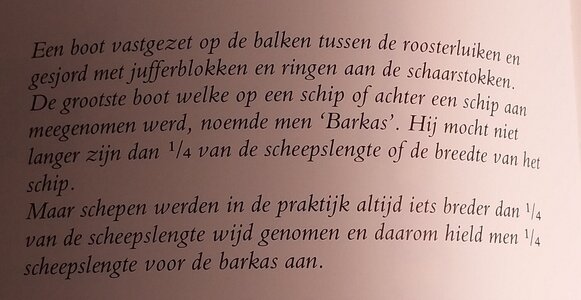
Secured a boat to the beams between the grating hatches and lashed with dead-eyes and rings to the shear poles.
Good research of you, and we learned something.
Better picture from Ketting
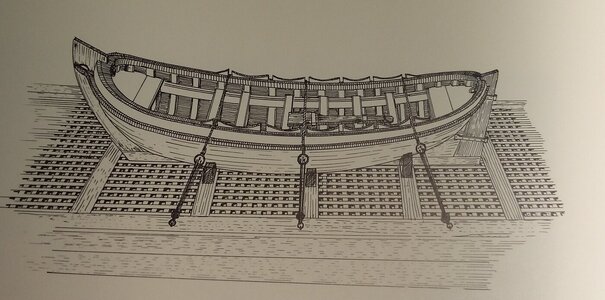

Secured a boat to the beams between the grating hatches and lashed with dead-eyes and rings to the shear poles.
Good research of you, and we learned something.
Better picture from Ketting

- Joined
- Sep 14, 2020
- Messages
- 152
- Points
- 88

Sweet build!
Thank you very much The learner. Thank you for the like..Sweet build!
I'm continuing with the rotating chamber cannons on the railing, luckily there will only be four.
I found the current cannon in a book by Ab Hoving: Het Schip Van Wilem Barents and painted it.
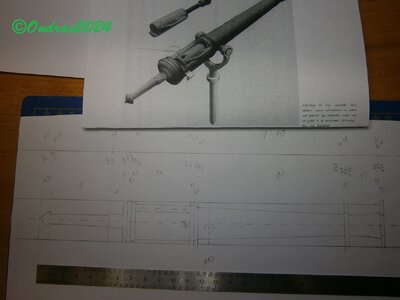
Then the turning began. It is very small against already created cannons.
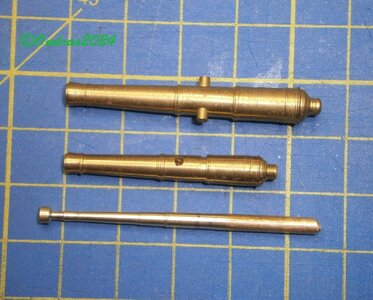
Created pockets for exchange chambers..
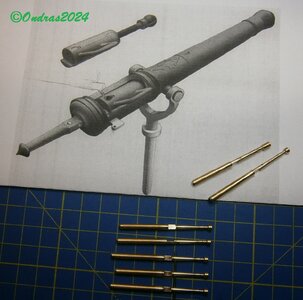
Of course, you need to start making a larger number, they slowly decrease during the work..
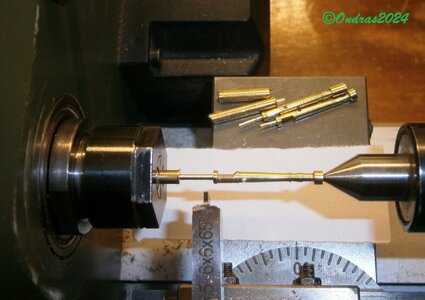
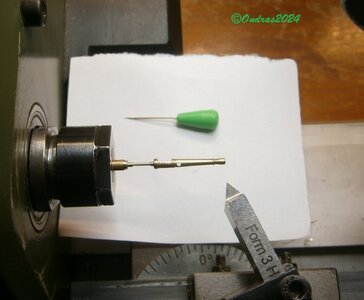
Added chambers..
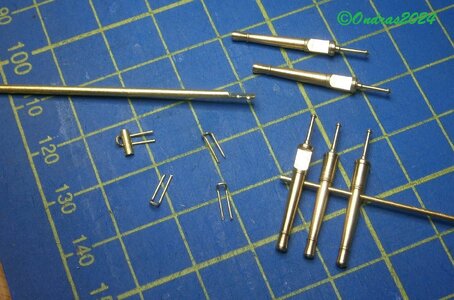
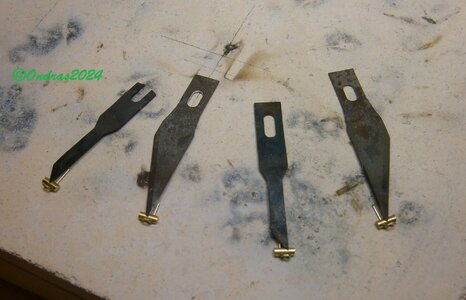
Result OK..

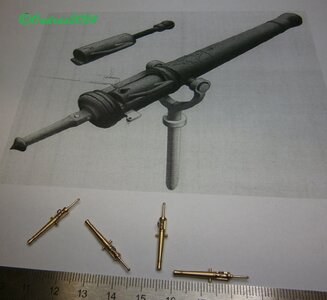
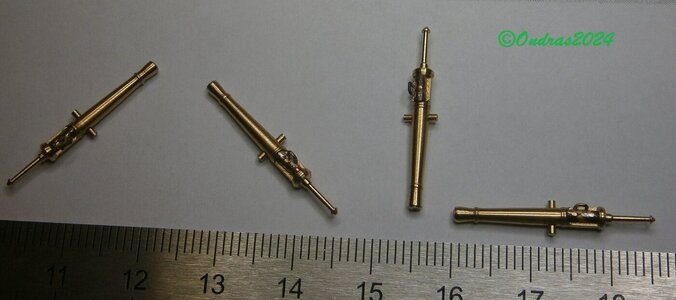
Now the fun is starting - beautiful details on the gunneryAnd now I can rush to the rigging!!
Congratulations for reaching this important step with the finished hull and deck
I am a big fan of your work
This is simply spectacular metalworks Ondras!
Now the fun is starting - beautiful details on the gunnery
Congratulations for reaching this important step with the finished hull and deck
I am a big fan of your work
This is simply spectacular metalworks Ondras!
So much craftmenship to see here.
Thank you very much friends, I am trying my best..Witaj
Praca na najwyższym poziomie. Pozdrawiam Mirek
Finally the main lower parts of the masts..

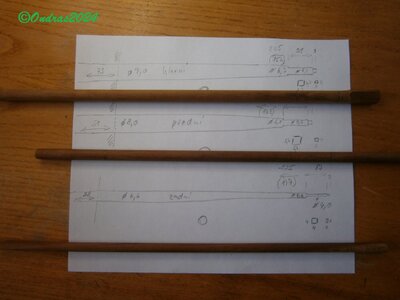
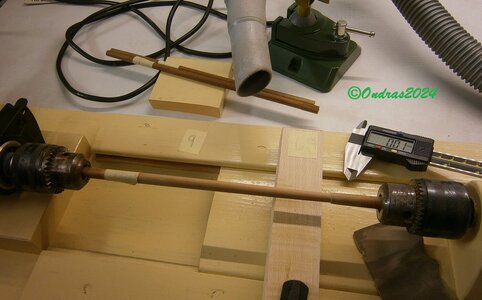
Temporary direction signs created for exact machining directions..
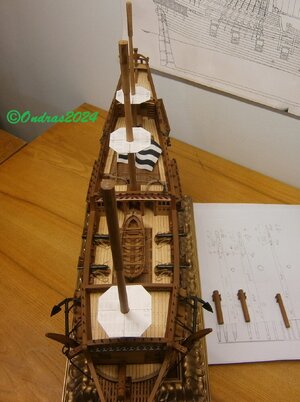
The tops are machined and holes drilled for the location of the lower tie-down points..
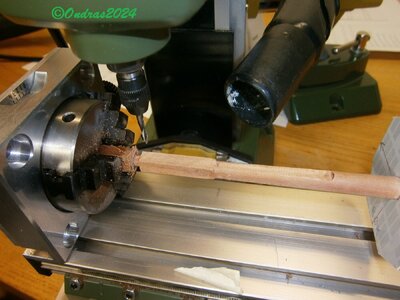
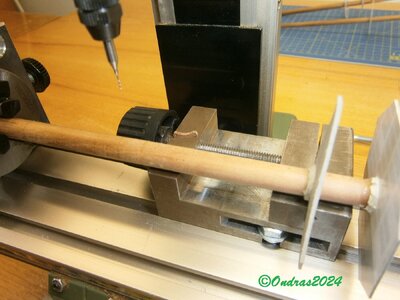
Finished lower parts of the masts..
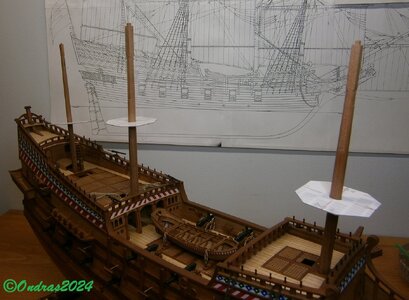
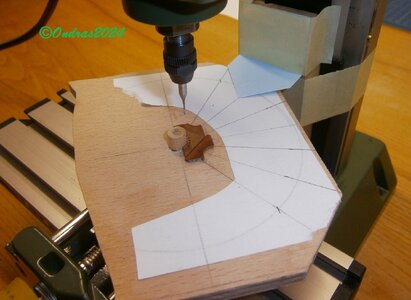
(Manual dividing device)
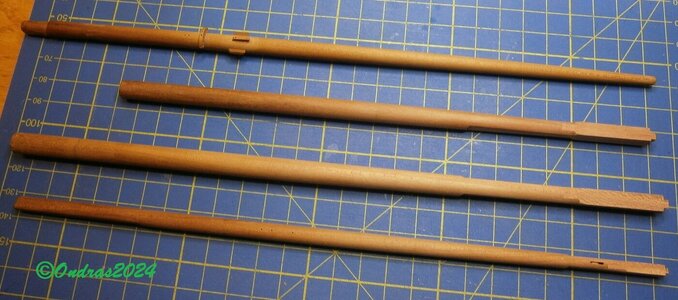
Done..
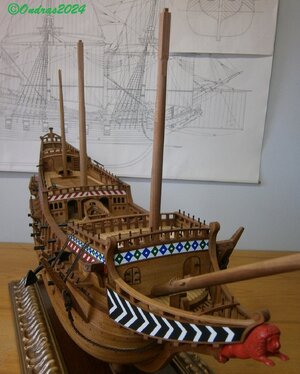
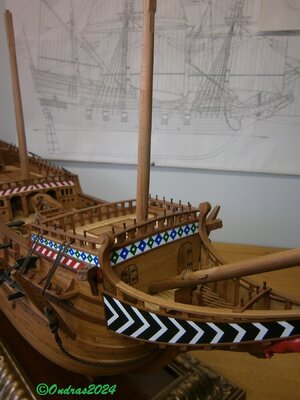
Now tops and topmasts..

You seem to have a clever solution for every challenge. A manual dividing wheel!
Beautiful work indeed!!
- Joined
- Sep 14, 2020
- Messages
- 152
- Points
- 88

Well detailed build, thank you very much
Hello Ondras, I wish you all the best and a Very Happy Birthday  .
.
Enjoy your day.
 .
. Enjoy your day.
Wonderful Ondras! I hope you have a great birthday celebrating with family and friends!


